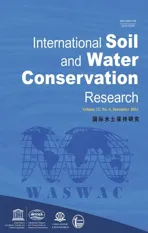Spatial distribution of soil erosion and its impacts on soil productivity in Songnen typical black soil region
2023-03-22YunXieJieTangYanGaoZhijiaGuGangLiuXiaoyuRen
Yun Xie , Jie Tang , Yan Gao , Zhijia Gu , Gang Liu , Xiaoyu Ren
a Department of Geographic Science, Faculty of Arts and Sciences, Beijing Normal University at Zhuhai, Zhuhai, 519087, China
b State Key Laboratory of Earth Surface Processes and Resource Ecology, Faculty of Geographical Science, Beijing Normal University, Beijing,100875, PR China
c Songliao Water Resources Commission, Ministry of Water Resources, Changchun, Jilin,130021, PR China
d Key Laboratory for Synergistic Prevention of Water and Soil Environmental Pollution,School of Geographic Sciences, Xinyang Normal University, Xinyang,464000, PR China
Keywords:Soil erosion Land productivity PI model Soil loss rate Black soil region
A B S T R A C T Soil erosion is an important reason for land degradation.The black soil region of Northeast China is the main grain production base in China, however, the black soil productivity in this region is at risk and unsustainable now because there was few soil conservation measures in nearly 100 years of cultivation.To assess the impact of erosion on land productivity, both 210 sampling points for 137Cs measurement and 112 sampling points for soil profile features were laid out on cultivated land of Songnen typical black soil region in combination with the 2010 China land use map.The current soil erosion/deposition rate and land productivity index PI were calculated over the study area,and then the PI values were predicted erosion by 20,50,100,and 200 years without soil and water conservation measures based on the current erosion rate and soil profile characteristics.The results showed that the average soil erosion rate of cultivated land in the study area was 705.8 t/(km2·a), and 77.0% of the cultivated land had soil erosion rate larger than the soil loss tolerance of 200 t/(km2·a).Spatially, the soil erosion rate in the northern region was greater than that in the southern region significantly, which was mainly affected by slope steepness.The relationship between soil erosion rate (SL) and slope steepness (θ) in degree was established according to the results of 137Cs measured at 210 sample points:SL=556.4*θ or SL=0.464*θ in mm/a (given soil bulk density is 1200 kg/m3).The current mean value of PI for cultivated land was 0.59, decreasing significantly from north to south, which was mainly influenced by organic matter content.The predicted PI values decreased significantly with the increase of erosion years in the northern area.This is related to the topography of rolling and hills in the northern area with a greater soil loss rate,leading to a rapid decrease of organic matter content and the increase of sand content in the topsoil in the future.The spatial distributions of the current soil erosion rates and predicted PI values after years of erosion for cultivated land would be helpful for soil conservation policy-making.
1.Introduction
The land productivity is determined by the topsoil rich in organic matter.Man-made accelerated erosion caused by long-term cultivation makes the loss of topsoil,rich in organic matter,in turn,affects land productivity (Nearing et al., 2017).Assessing the impact of erosion on productivity at a regional scale is constrained by two factors:how to quantify the rate of regional soil erosion,and how to quantify the process by which soil erosion reduces land productivity(Gao, Xie, Liu,Liu,& Duan, 2015).Soil erosion rates are determined mainly by runoff plot measurements and soil erosion prediction models (Laflen & Flanagan, 2013; Toy et al., 2002; Wischmeier &Smith, 1978).To assess soil erosion on regional scale, multiple runoff plots need to be distributed widely which was limited in this study(Guo et al.,2015),and the assessment results by a soil erosion model are affected by the model input parameters accuracy and need to be verified by observations (Alewell et al., 2019; Borrelli et al.,2013; Panagos et al., 2015).The137Cs radionuclide tracing method provides a more objective technique for assessing soil erosion rates at regional scales(Walling&Quine,1990;Zhang et al.,2015),which has been applied well in the black soil region of northeast China(Cheng, 2018; Du, 2011; Wei, 2007).Experimental methods were used widely to evaluate the impacts of soil erosion on land productivity, including topsoil cutting or topsoil addition method,topographic section method, plot control method, and soil profile simulating method, etc.(Gao et al., 2014).Bakker et al.(2004)reviewed various methods and considered the results of the plot experiment method as the most reasonable, and productivity decreased by 4.3% when 10 cm soil was eroded.Gao et al.(2014)found the similar result that productivity decreased by 5.06% when 10 cm soil was eroded by using soil profile simulating method.However, at the regional scale, even the same soil erosion rate can lead to differences in land productivity decline due to the large differences in soil profile characteristics.Especially, the erosion productivity decreases faster when the underlying parent material of the top soil layer is the Quaternary loose sediments such as gravel and sand.To represent the decrease of land productivity caused by erosion,Neill(1979)proposed a productivity index PI model,which used soil profile indicators to reflect land productivity, and subsequently was improved(Kiniry et al.,1983;Pierce et al.,1983).Duan,Xie,Feng,and Yin(2009)applied PI model to the black soil region in Northeast China, and found that clay content, as an important component of adsorbed soil organic matter,had a significant impact on land productivity.Therefore, Duan et al.(2010) added the clay content to the model, which had a better results than other productivity indicators.
Northeast China has been cultivated since late 19th century,and has become to one of the most important commercial grain bases in China due to dominant black soil with rich organic matter content.Corn and soybean accounted for 33%and 35%of the total national production(National Bureau of Statistics,2019).The topography of this area is a hilly terrain with flat but long slope length.The cultivation has been ridge and furrow planting.There was lack of soil conservation during the long-term reclamation.This resulted in soil erosion and land degradation such as black soil layer decreasing even disappearing.The black land productivity is at risk and unsustainable.To assess the impact of soil erosion on land productivity for soil conservation planning,the objectives of this study are:(1)to evaluate the spatial distribution of soil erosion based on137Cs sample measurements;(2)to predict the impact of soil erosion on land productivity and its spatial distribution by using PI model.
2.Material and methods
2.1.Study area
Songnen Plain is located in the middle of northeast China, surrounded by the Lesser Khingan Mountains and Changbai Mountains to the east and the Greater Khingan Mountains to the west.Its eastern part has rolling hilly topography and the dominant soil is black soil with dark organic top layer in Chinese soil genetic classification(CSGC,National Soil Survey Office of the People’s Republic of China, 1994).So the eastern part of Songnen Plain was called Songnen typical black soil region (STBSR) (Liu et al., 2008).The black soil was also called isohumosol in Chinese Soil Taxonomy(CST, Gong,1999, pp.442-447), mollisol in US Soil Taxonomy (ST,Soil Survey Staff,1999),and phaeozem in World Reference Base for soil resources(WRB,FAO,1998).The geographic location of STBSR is 43°6′-50°14′N and 126°31′-128°9′E (Fig.1), with land area of 97,600 km2.It has temperate continental monsoon climate.The average temperature was-10-16°C in Jan.,and 20-24°C in Jul.The annual precipitation was 450-800 mm, decreasing from the southeast to the northwest.The rainfall in Jul.and Aug.was more than 70% of total annual amount.The most land was cultivated as cropland, and crops are maize and soybean, which was planted at the end of Apr.or the beginning of May,and harvested at the end of Sept.or the beginning of Oct.from the south to the north.
2.2.Soil sampling for erosion/deposition analysis
The soil erosion or deposition rate in the study area was measured by137Cs radionuclide tracer, and soil samples were collected in 2015.Starting from the point at 126°E and 49°N,a total of 210 sample points were laid out on cultivated land in combination with the 2010 China land use map, taking the grid crossing points with 24 ‘intervals in the meridional and zonal directions as sampling designed points (Fig.1).To obtain the background value of137Cs, the 2.75 m high-resolution remote sensing image of Corona KH-4A satellite of the United States in 1965 was used,combined with land use map and 1:50,000 topographic data, 30 points with flat terrain that have been grassland or woodland since 1965 to 2010 were selected firstly, and fourteen points were identified finally in the subsequent sampling on site(Fig.1).
After arrived at the sampling designed point with GPS navigation,an equilateral triangle with sides of 1 m and this point as one of three triangle points was determined.Three points of this equilateral triangle were selected as the sampling points, and vertical ground sampling was conducted using EK0105 auger made in the Netherlands with an inner diameter of 8 cm and a thickness of 15 cm at each sampling point, 2 layer soils to 30 cm depth were sampled at 15 cm intervals if the designed point was located at the top,upper,middle and lower slopes of hilly hills,and more than 2 layer soils to 45 or 60 cm depth were sampled at 15 cm intervals if the designed point was located at the foot,bottom or floodplain of deposition areas.Soil samples of the same depth from three actual sampling points were mixed into one sample into the sample bag.So there were 2 layer samples and 3 to 4 layer samples for designed points at hilly slopes and at deposition areas respectively.
After natural air drying,the 400 g grinded samples through the 2 mm soil sieve were put into polyethylene material test box and measured for137Cs mass activity by using the GMX50P4 N high purity germanium probe γ detector(determination range of 3Kev-10Mev, The detection efficiency was 50%, and the test time was>27000s) made in United States ORTEC in Beijing Normal University environmental radionuclide laboratory,and then mass activity was converted to the area activity.When the measured area activity of the137Cs sample was greater than that of the137Cs background sample, Equation (1) was used to calculate the soil erosion rate(Zhang et al.,1999), otherwise equation (2) was used to calculate the soil deposition rate(Lowrance et al.,1988):
Where,A was the area activity of the137Cs sample,Bq/m2.Arefwas the area activity of the137Cs background sample, Bq/m2.R was runoff coefficient.The h was the average annual soil loss thickness,cm.H was the top tillage layer thickness, cm.T was the sampling year.S was the annual deposition rate, t/km2; C was the area activity of the137Cs sample,Bq/m2.Z was the area activity of the137Cs background sample after runoff coefficient correction, Bq/m2.Wdwas the mass activity of the137Cs sample,Bq/kg.
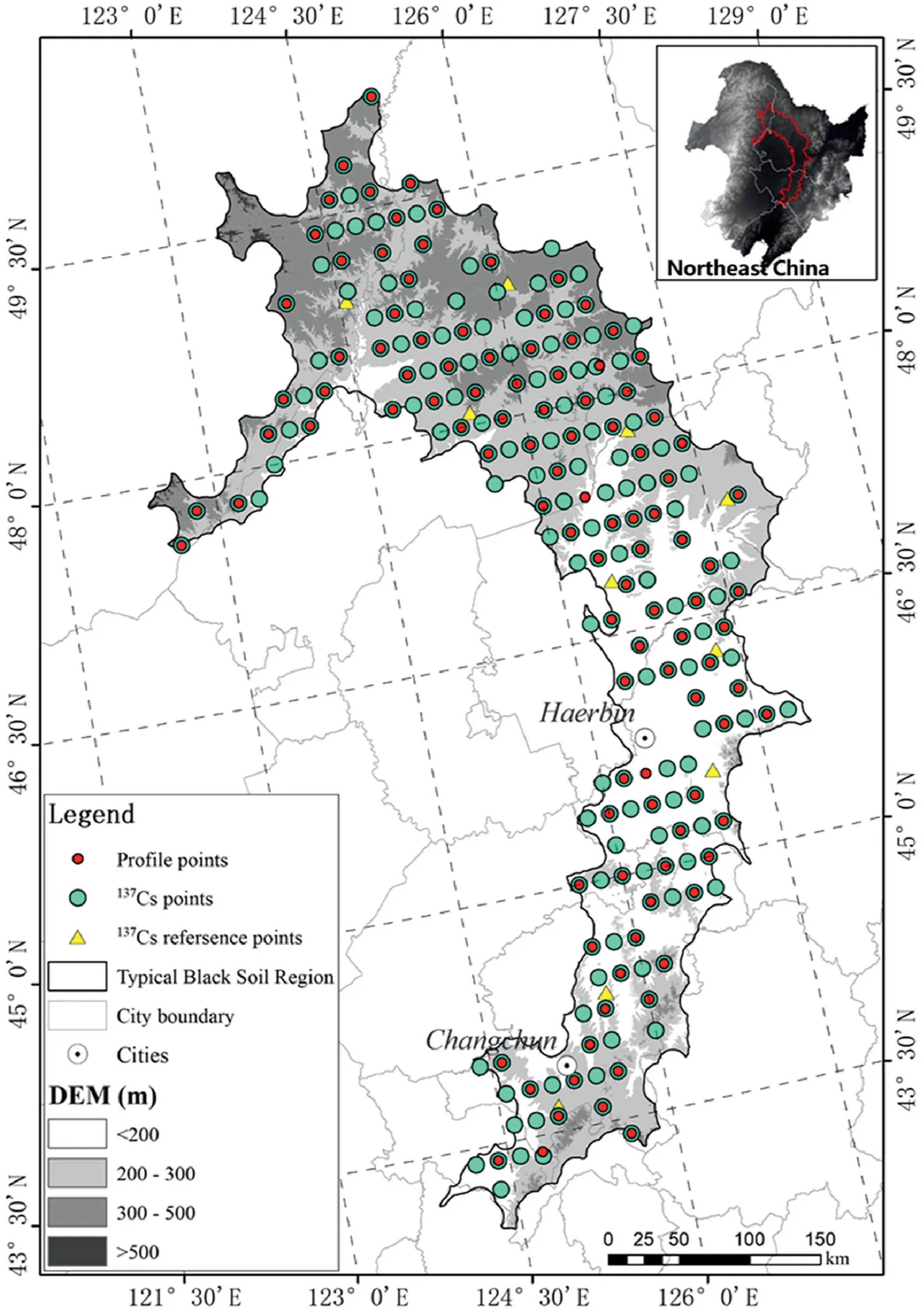
Fig.1.Study area and soil sampling position.
2.3.Soil sampling for soil profile productivity analysis
Based on the137Cs sample points mentioned above,the diagonal crossing points formed by four adjacent points were selected as soil profile sample points, and a total of 112 cropland sample points were determined (Fig.1).An auger with a handgrip and extension(model no.641-792-8285)produced by JMC of the U.S.was used to obtain soil samples.A maximum of five layers of samples were collected from each sample site,and each layer was at least 20 cm thick with about 500 g soils.Three sampling methods were designed according to the difference of soil thickness between the surface layer and the parent material layer.(1) The mixed soil sample of 0-20 cm was collected when the thickness between the surface soil and the parent material layer was less than 20 cm (2)The mixed soil samples with a thickness of 20 cm were collected for every 20 cm from the surface layer down to the parent material layer when the soil thickness between the surface soil and the parent material layer was between 20 and 80 cm (3) When the thickness of soil and parent material layer was greater than 80 cm,mixed samples were respectively collected at the depth of 20 cm in the surface layer and 20 cm below the parent material layer.Then,the soil layers below 20 cm depth and above the parent material layer were equally divided into three layers, and three mixed samples with a thickness of 20 cm were collected in the middle of each layer.For all of the soil samples,soil organic matter content(%)was measured using a total organic C analyzer, soil pH was measured by potentiometry in the 1:2.5 (w/v) soil/distilled water suspension, and soil particle size distribution was measured using the sieve-pipette method (Liu,1996).
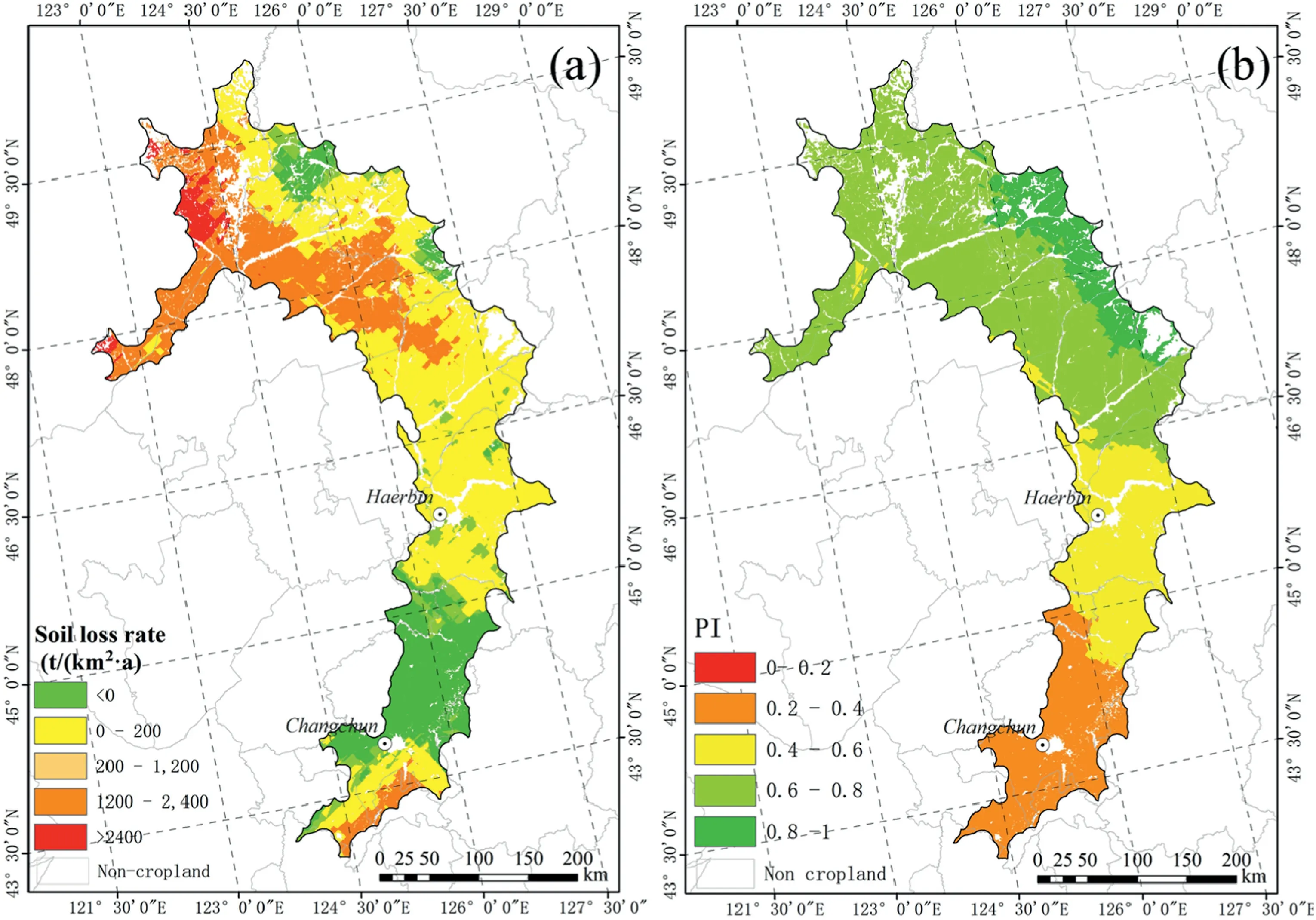
Fig.2.Distribution of soil erosion rate (a) and PI (b) in cultivated land.

Table 1 The percentage of cultivate area under different soil loss rate and PI in total cultivate area.

Table 2 The percentage of cultivate area under different PI values after 20,50,100, and 200 years of erosion in total cultivate area.
Land productivity index (PI) was calculated using the Modified Productivity Index method suggested by Duan et al.(2009).
Where A, D, O, and CL were dimensionless variables representing the influence degree of soil available water capacity(AWC),soil pH,soil OM content and soil clay content(particle size<0.002 mm)on land productivity respectively.The values varied from 0 to 1 representing no land productivity to no influences.WF was the root distribution weight of the plant.The i was the order number of the soil layers.Detail calculation equations for A, D, O, CL, and WF referred to Gu et al.(2018) and Duan et al.(2009).
2.4.Prediction of PI due to soil erosion rate
To assess the impacts of soil erosion on PI,the soil loss equation of cultivated land in Northeast black soil area developed by Liu et al.(2008)was used to predict the soil loss thickness in 20,50,100 and 200 years.
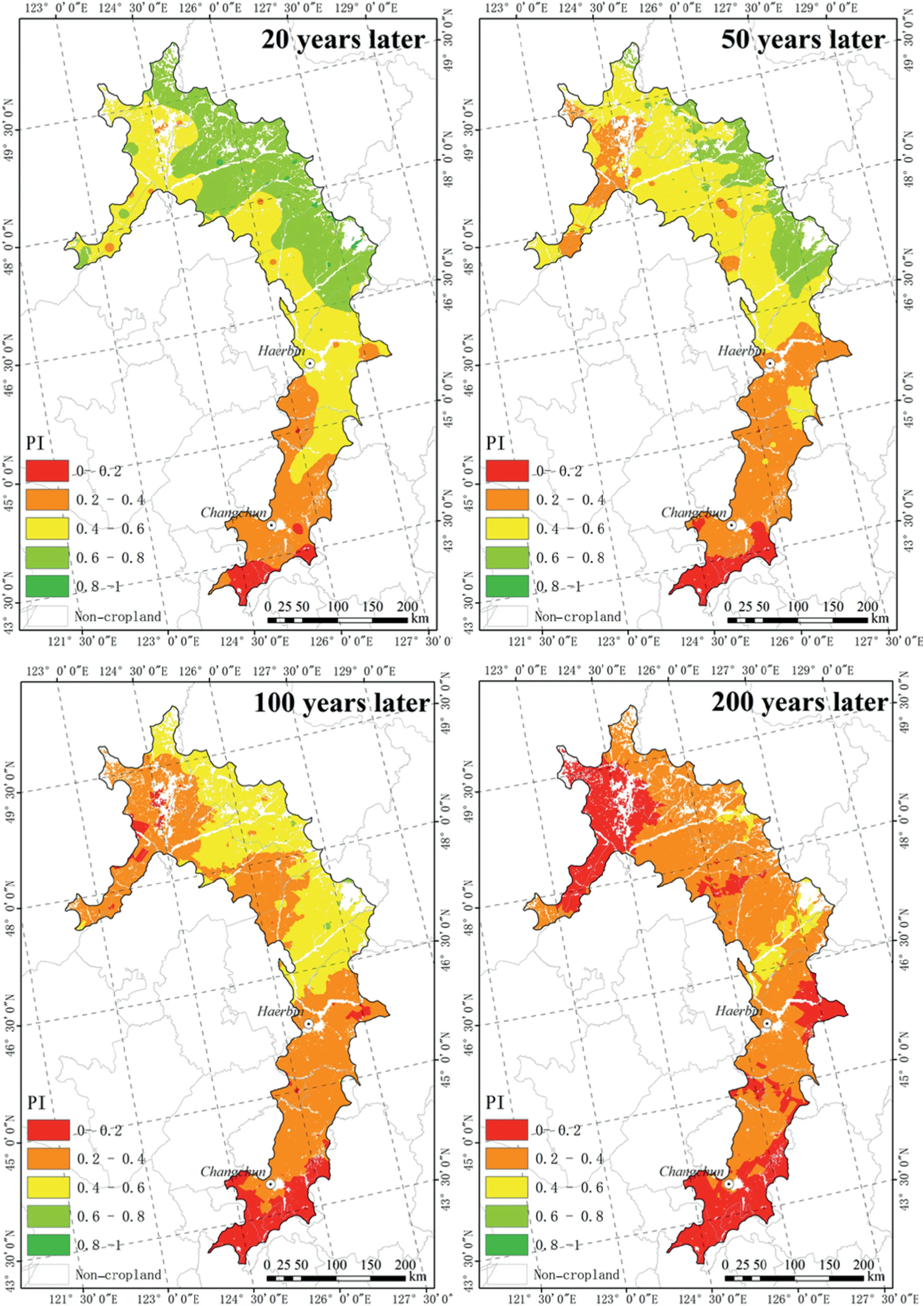
Fig.3.Distribution of cultivated land PI after 20, 50,100, and 200 years of erosion.
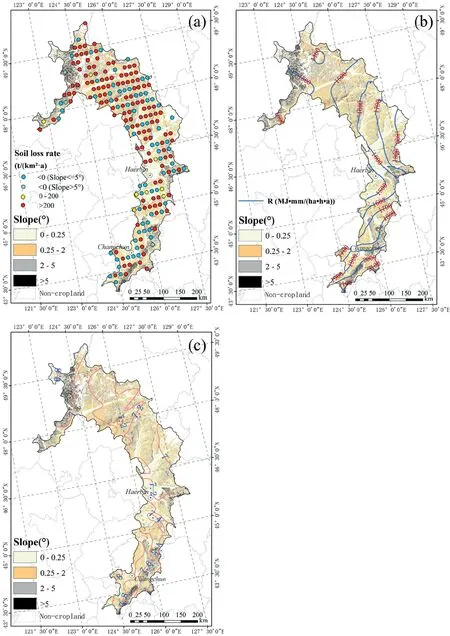
Fig.4.Distribution of slope steepness (a), rainfall erosivity (b), and average annual maximum daily wind speed (c).
Where the SL was the thickness of soil loss,mm.The θ was the slope steepness,degree.The N was years of 20,50,100 and 200.Based on the soil loss thickness and the soil profile properties of the 112 cultivated land samples,the soil profile variables after the soil loss were estimated, and then the PI values after soil erosion in 20,50,100 and 200 years were predicted using equation (3).
2.5.Statistical analysis
The soil erosion/deposition rates of 210 cultivated land samples and PI values of 112 cultivated land samples and their predictions in 20,50, 100 and 200 years were spatial interpolated by using the Kriging method, and the land use map was used to extract the cultivated land results by ArcGIS software.The regression analysis between soil erosion rates measured by137Cs and their slope steepness, and PI values and soil organic matter content of top 20 cm layer were done by SPSS software.

Fig.5.The relationship between slope steepness and soil loss rate.
3.Results
3.1.Spatial distribution of soil erosion/deposition
Cultivated land area accounted for 69.2% of the total area, and the average soil erosion rate was 705.8 t/(km2·a).The spatial distribution characteristics of soil erosion rate showed that the cultivated land area with latitude greater than 45°N or less than 44°N was greater than 0, i.e.erosion was dominant in these regions.However, the soil erosion rate in the latitudes between 44°N and 45°N was less than 0,indicating that the soil was mainly deposited.Besides,there was a small soil deposition area in the northeastern of the erosion-dominated region at latitudes greater than 45°(Fig.2a).The cultivated land area with soil erosion rate less than 0 and more than 0 accounted for 16.8%and 83.2%of the total area in the study area,respectively(Table 1).The cultivated land area with soil erosion rate exceeding the soil loss tolerance of 200 t/(km2·a)accounted for 77.0% of the total area.The most severe soil erosion area,located in the tableland area at the eastern foot of the Greater Khingan Mountains northwest of the study area,had a soil erosion rate of more than 2400 t/(km2·a), accounting for 2.4% of the total cultivated land area.Its periphery and part of the latitude less than 43°30′have soil erosion rate varying from 1200 to 2400 t/(km2·a),accounting for 26.7%of the total cultivated land area.In the central part of the study region, the soil erosion rate varied between 200 and 1200 t/(km2·a) in the latitudes between 45 and 48°and less than 44°,and the soil erosion area of cultivated land accounted for 47.9% of the total area.
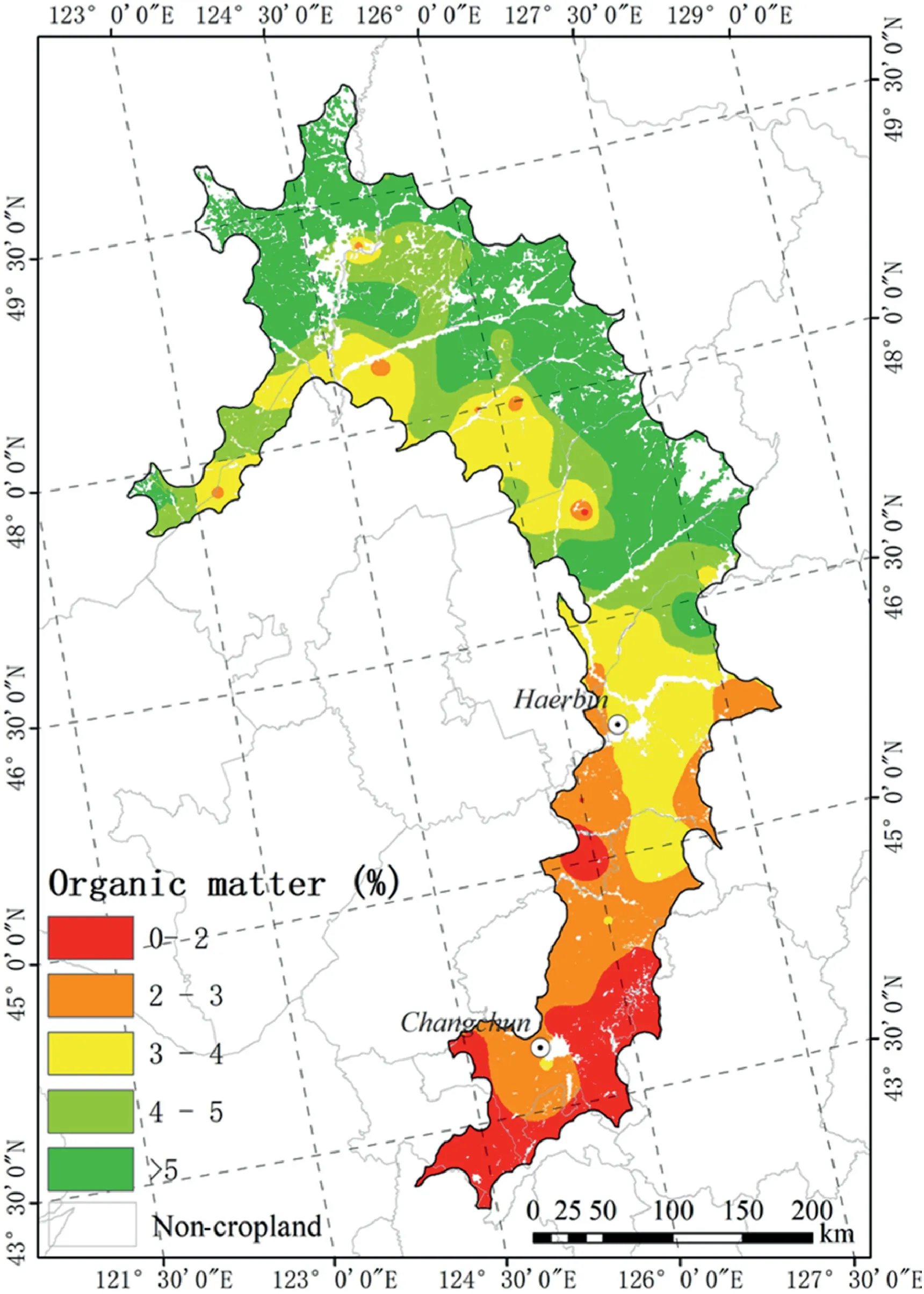
Fig.6.Distribution of soil organic matter in the surface layer (0-20 cm) of the study area.
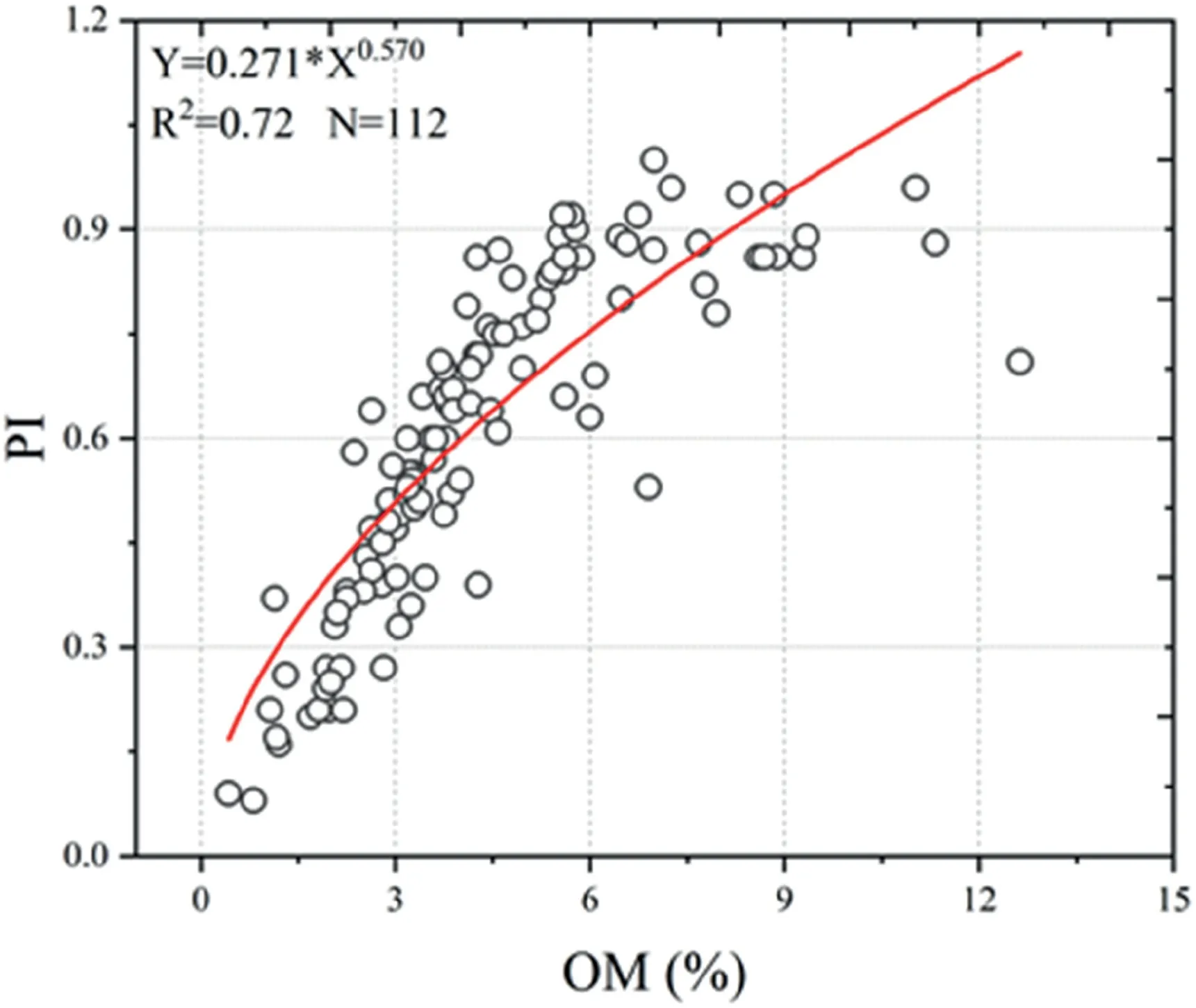
Fig.7.The relationship between PI and surface soil organic matter (OM, %) in 112 cultivated land sample points.
3.2.Spatial distribution of PI values
The cultivated land area with the highest PI of 0.8-1 was located at the western foot of the eastern Lesser Khingan Mountains between 47°N and 49°N,accounting for 9.4%of the total area.The PI in the latitudes between 46.5 and 50°N varied from 0.6 to 0.8, accounting for 50.8%, and the PI in the latitudes between 45 and 46.5°N varied from 0.4 to 0.6, accounting for 21.3%.The PI of cultivated lands with latitudes less than 45°N varied between 0.2 and 0.4, accounting for 18.5% of the total area(Table 1).
PI value of cultivated land in the study area decreased significantly with increasing erosion years at the current erosion rate,especially in latitudes greater than 46°N (Fig.2b).Current cultivated land with the PI value of 0.8-1 decreased to 0.6-0.8 after 20-50 years of erosion, to 0.4-0.6 after 100 years of erosion, and 0.2-0.4 after 200 years of erosion.PI value of 0.6-0.8 decreased to 0.4-0.6 after 50-100 years of erosion and to 0.2-0.4 after 200 years of erosion, and even to 0-0.2 for the cultivated land in the low hilly area located at the eastern foot of the Greater Khingan Mountains (Table 2).The decrease rate of PI in latitudes less than 46°N was lower than that in other regions,especially in the region with latitudes between 44°N and 45°N.PI around 45°N was between 0.4 and 0.6, and around 44°N was between 0.2 and 0.4(Fig.2b).After 200 years of erosion,the PI in these areas was mainly between 0.2 and 0.4.The latitude below 44°N in the study area had the lowest PI values,which were now between 0.2 and 0.4(Fig.2b),and then fell to 0-0.2 after years of erosion(Fig.3).
4.Discussions
4.1.Impact of slope steepness on soil erosion
The soil erosion rate of cultivated land in the study area was mainly influenced by slope steepness,and their spatial distribution was divided into northern and southern regions roughly with 45°N as the boundary.Liu et al.(2021)reported that cropland with slope steepness greater than 0.25°has obvious soil loss in the black soil region, and considering that the average steepness of black soil areas is 2.4°(Tang et al.,2022),slope steepness in the cropland was divided into three groups:<0.25°,0.25-2°and>2°.The cultivated land area in the northern region with slope steepness <0.25°,0.25-2°and>2°accounted for 35.7%,38.0%,and 26.3%of the total area,respectively,and the cultivated land area with slope steepness<0.25°,0.25-2°and>2°in the southern region accounts for 50.6%,32.3% and 17.1% of the total area, respectively (Fig.4).Slope steepness of the northern region was significantly larger than that of the southern region,especially in the low hilly area of the eastern foot of the Greater Khingan Mountains in the northwest of the study area,most slope steepness was more than 5°,resulting in the largest soil erosion rate in this area of more than 2400 t/km2.The good relationship between soil erosion and slope steepness was because there was little spatial variation in other factors affecting soil erosion, such as rainfall, soil and tillage.The study area was located in the rain shadow region of the eastern mountains,where the rainfall drops from more than 800 mm in the northeastern mountains to 400-600 mm in this area,and annual rainfall varied mainly in the east-west direction.The spatial variation of rainfall erosivity in the study area was not obvious, because the shape of this area is narrow from east to west and long from north to south,which caused the annual rainfall erosivity to only vary between 1500 and 1800 MJ mm/(haha) from east to west (Fig.4b).Soil type in this area was also homogeneous due to affect by rainfall distribution.All of the soil was black soil except for few meadow soil distribution in low-lying areas on both sides of the river.Largescale reclamation in the study area began at the end of the 19th century.During the reclamation for more than 100 years,maize and soybean were the main crops, and ridge planting was the main tillage method (Xie et al., 2019; Ye et al., 2009).
Soil erosion rate of less than 0 measured by137Cs represents soil deposition.Spatial interpolation results of137Cs sample points showed that soil erosion rate was less than 0 in the area of 44-45°N, which may be related to the wind erosion and topography characteristics of this area.The west of this area was next to sandy land on the southern edge of the Greater Khingan Mountains,which was also the area with high wind speed(Fig.4c),where wind erosion and aeolian accumulation led to the increase of137Cs content.Besides, the topography of this area was the terrace at the eastern foot of the eastern mountains,with gentle slope steepness,which was also favorable for wind erosion and aeolian accumulation.The statistical results of the cultivated land areas in different slope steepness within this area showed that the areas of cultivated land less than 0.25°, 0.25-2°, and more than 2°accounted for 48.6%, 35.7%, and 15.7% of the total area, respectively, which indicated that cultivated land slope steepness in this area was significantly lower than other areas.
The relationship between soil erosion rate and slope steepness based on the cultivated land137Cs sample points showed that cultivated land soil erosion in the study area increased with increasing slope steepness(Fig.5a).Samples with erosion rate less than 0 were concentrated in the slope steepness between 0 and 2°.Several samples located in the northwest and southeast had slopes steepness greater than 5°but a low soil erosion rate(Fig.4a),due to the effect of forest belts and meadows.The relationship between soil erosion rate and slope steepness was determined by regressing when the soil erosion rate of samples was greater than soil loss tolerance of 200 t/(km2·a)(Fig.5b)and found that the erosion rate increased by 556.4t/(km2·a)with the slope steepness increasing by 1°,namely,the soil loss thickness was 0.46 mm for each 1°increase if the soil bulk density was taken as 1200 kg/m3.This result was slightly smaller than the soil loss rate proposed by Liu et al.(2008),which was caused by the different slope ranges of the sample points.In this study, samples were evenly distributed within the study area,and the proportion of sample points with slope<0.25°,0.25-2°, 2-5°and >5°was 35.9%, 35.2%, 20.1%, and 4.8%, respectively, including cultivated land erosion with gentle slope steepness.In the observation data of the runoff plot used by Liu et al.(2008), the 50% slope was between 1.6 and 2.0°, and the 50%slope was 5°, which had a larger slope than that in this study,resulting in the greater soil loss rate.What's more, the southern area, where latitude ranged from 44°to 45°and erosion rate was less than 0,had cultivated land with slope steepness above 2°,so it is necessary to improve the sampling resolution of137Cs samples and strengthen the study of wind erosion in this area.
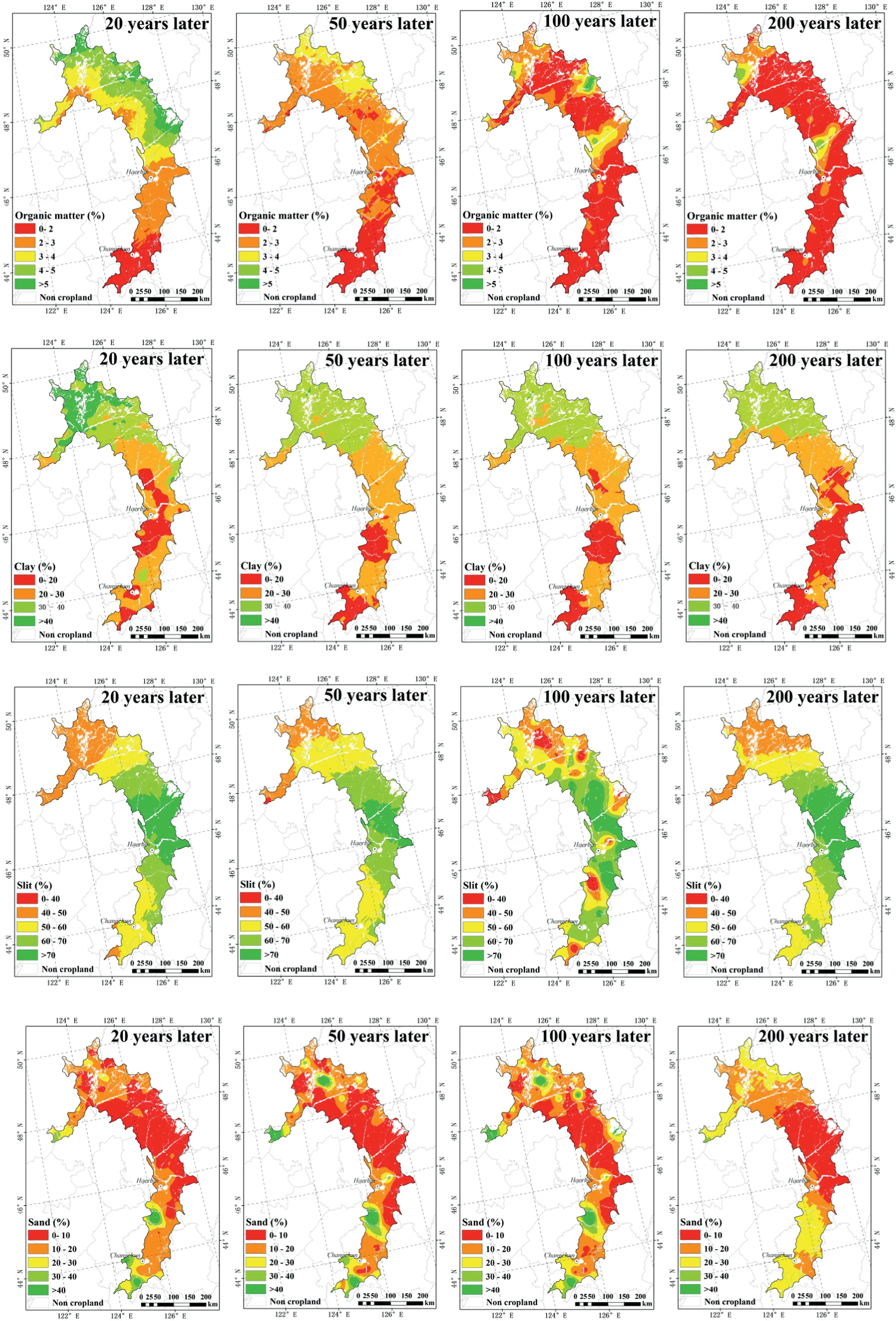
Fig.8.Distribution of soil organic and mechanical composition in cultivated land after 20, 50,100 and 200 years of erosion.o
4.2.Effects of soil organic matter on PI
PI values calculated from soil profile data of 112 cultivated land sample points were mainly influenced by soil organic matter content.Soil organic matter content in the area north of 46.5°N was greater than 4%(Fig.6),corresponding to PI values greater than 0.6(Fig.2b).Soil organic matter content in the region of 45.5°-46.5°N varied from 2 to 4%(Fig.6),corresponding to PI values varied from 0.4 to 0.6(Fig.2b).For the area south of 45.5°N,soil organic matter content was less than 2%(Fig.6),and the PI values was less than 0.4(Fig.2b).PI values at each sample point had a good regression relationship with soil organic matter content (Fig.7).
PI reflects changes in soil properties with depth, therefore, soil organic matter and mechanical composition were further predicted after 20, 50,100, and 200 years of erosion (Fig.8).The spatial distribution of organic matter for different predicted years(Fig.8)was similar to the distribution of PI (Fig.3).In the north of 46°N, PI decreased significantly because organic matter rapid decrease with soil erosion,while PI in the southern of 46°N decreased slow due to slow reduction of organic matter, which further indicated that the change of PI was obviously related to the decrease of soil organic matter with increasing depth.The spatial variation of silt (Fig.8)and sand(Fig.8)contents with erosion years was mainly reflected in local areas,but the variation was not obvious in the overall area,which may be caused by the difference of parent materials of soil.Conclusion.
Soil erosion has posed a threat to the sustainable utilization of black soil resources due to the lack of soil conservation measures in the reclamation of black soil in Northeast China for nearly 100 years.In order to assess the impact of erosion on land productivity,210137Cs samples and 112 soil profile samples were collected from cultivated land in Songnen typical black soil region,to quantify the current soil erosion/deposition rate and land productivity index PI respectively in the study area.Furthermore,the productivity index PI was predicted after 20,50,100,and 200 years of erosion without soil conservation measures based on the current erosion rate and soil profile characteristics.The main conclusions are as follows.
1.The average soil erosion rate of cultivated land in the study area was 705.8 t/(km2·a), and the cultivated land area of exceeding the soil loss tolerance of 200 t/(km2·a) accounted for 77.0% of the total cultivated land area.Soil erosion rate in the northern region was greater than that in the southern region, and the maximum soil loss rate was located in the western foot of the Great Khingan,which exceeded 2400t/(km2·a).Soil erosion was mainly influenced by slope steepness because rainfall, soil and farming practices were similar within the study area.Based on the results of137Cs measured at 210 sample points, the relationship between soil erosion rate(SL)and slope steepness(θ)in degree was established: SL = 556.401*θ in t/(km2·a), or SL=0.464*θ in mm/a(given soil bulk density is 1200 kg/m3).It is noteworthy that the south-central region of the study area showed deposition characteristics,which may be related to the deposition caused by wind erosion or relatively small water erosion due to flat topography in that area.This needs further study.
2.The mean value of land productivity index PI of cultivated land in the study area was 0.59, which decreased significantly from north to south,and mainly influenced by organic matter content(OM%) with the relationship of PI = 0.271*OM0.570.Both of the thickness and organic matter content of the black soil in the north were greater than those in the south, because heat decreased with the increase of latitude,and organic matter was more abundant at higher latitude.
3.PI decreased significantly with the increase of erosion years in the northern area, which was related to the topography of rolling and hills in the northern area.Organic matter content decreased and the sand content increased in the subsoil as the topsoil was eroded.Considering that the northern area was the core distribution area of typical black soil in Northeast China,it is urgent to strengthen soil conservation to protect black soil resources.
Declaration of competing interest
The authors declare that they have no known competing financial interests or personal relationships that could have appeared to influence the work reported in this paper.
Acknowledgement
This work was supported by the National Key R&D Program of China [Grant number 2021YFD1500705].
杂志排行
International Soil and Water Conservation Research的其它文章
- Atlas of precipitation extremes for South America and Africa based on depth-duration-frequency relationships in a stochastic weather generator dataset
- Saturation-excess overland flow in the European loess belt: An underestimated process?
- Streamflow prediction in ungauged catchments by using the Grunsky method
- Towards a better understanding of pathways of multiple co-occurring erosion processes on global cropland
- Calibration,validation,and evaluation of the Water Erosion Prediction Project (WEPP) model for hillslopes with natural runoff plot data
- Long-term trends of precipitation and erosivity over Northeast China during 1961-2020
